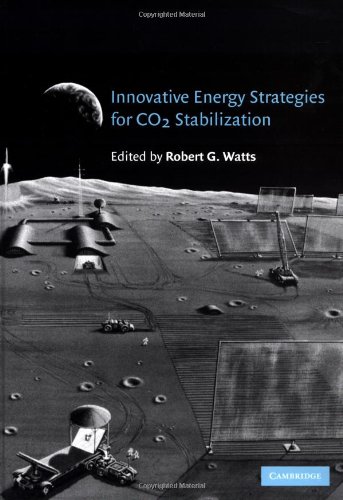Product desciption
Innovative Energy Strategies For Co2 Stabilization 1st Edition Robert G Watts by Robert G. Watts 9780511063848, 9780521807258, 0521807255, 0511063849 instant download after payment.
There is now little question that humans have caused a worldwide rise in carbon dioxide concentrations which, projected into the rest of this century, will result in catastrophic climate changes around the world. Are we doomed? Or are there solutions on the horizon? This book provides an excellent overview of the solutions that may be available to us. It reviews the CO2 problem itself, and covers essentially the entire range of possible technical and policy solutions. Energy efficiency, traditional renewables such as hydro power, wind, biomass; more speculative options like tidal power and salinity gradients; even fission power, according to the analyses here, can all contribute something to the problem, but individually or even together seem insufficient to handle the full problem. On the other hand, there are a few options available that could possibly solve the whole energy/environment problem in themselves: solar power, on earth or in space (in particular the Moon); fusion whenever it becomes available; and geoengineering in one form or another (carbon sequestration, stratospheric aerosols, or space-based solar shields). The main question is whether they can solve it in sufficient time and at low enough expense to avoid global economic disaster. To sum it all up: (1) Human-generated CO2 and the associated global warming is a big problem for the coming century, although there are some engineering strategies that could (with other side-effects) mitigate it. (2) We're going to be running out of fossil fuels anyway in the next few centuries; without alternatives, global economic prosperity will be endangered much sooner than that. (3) Depending on how far efficiency improvements can get us, the mid-century energy requirement from non-fossil sources is between 9 and 30 TW(thermal), or 3 - 10 TW (electric), year-round. (4) No current renewable technology can provide that power level for less than about $10 trillion in capital investment. (5) The best plan seems to be an adaptive one: introduce a carbon tax and technology incentives of all sorts for the renewable options, and then adjust both taxes and incentives in response to changing assessments of CO2 damage and non-fossil technological promise. (6) Wind may be ready for large scale installation; however investments are needed in energy storage and transmission technologies to make it really practical. Biofuels are already in large-scale use: R&D investments to improve their efficiencies, perhaps including genetically engineered crops, should be supported. Solar is a little further away, but R&D there should be strengthened because of the huge potential. (7) Nuclear fission will be around - we need to decide whether to try to make it a big part, or a small part, of our energy future (i.e. choosing between once-through and breeder fuel cycles). (8) Fusion likely won't help by mid-century. But the long-term payoff may be large; we should continue to invest moderately in the technology. (9) Space solar power, whether or not on the Moon, has enormous theoretical potential. Technology incentives to prove its capabilities seem warranted - investments and demonstration projects at least for photovoltaic capabilities, light-weight space construction, space launch, and wireless power transmission. all seem well justified by this and spinoff applications.


